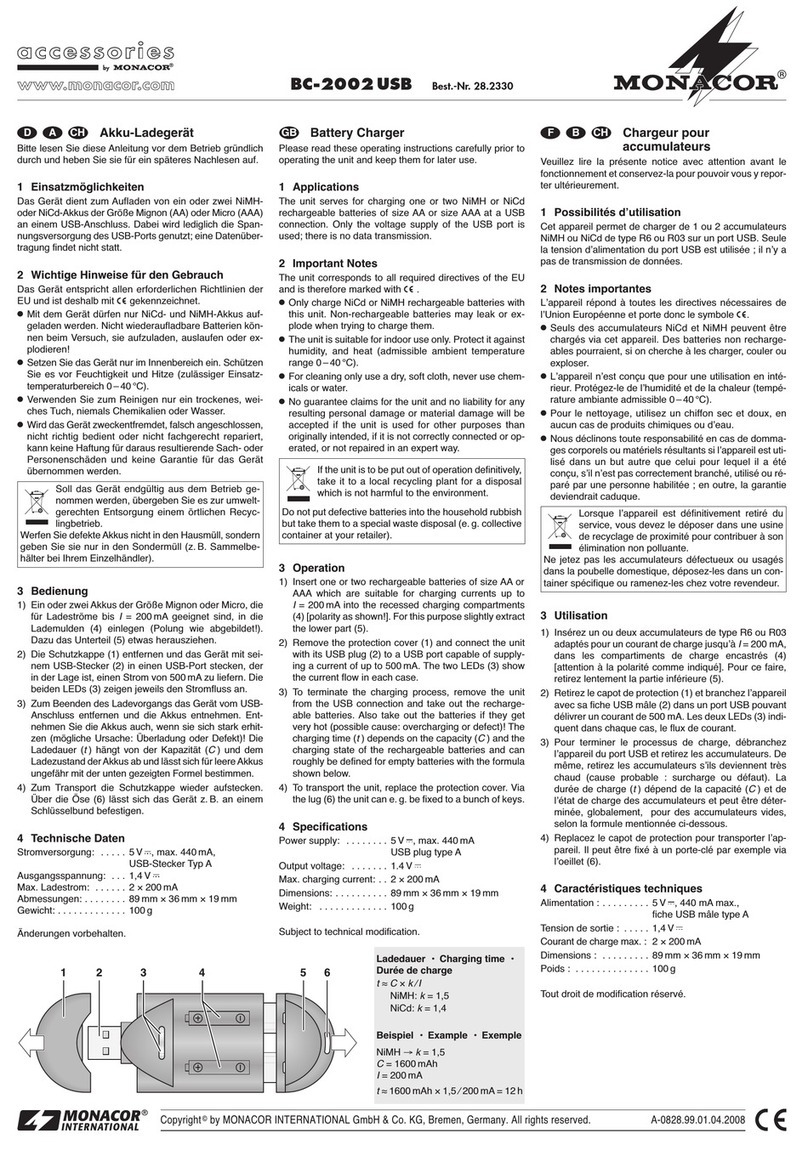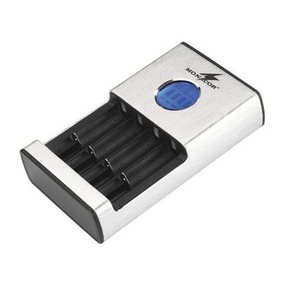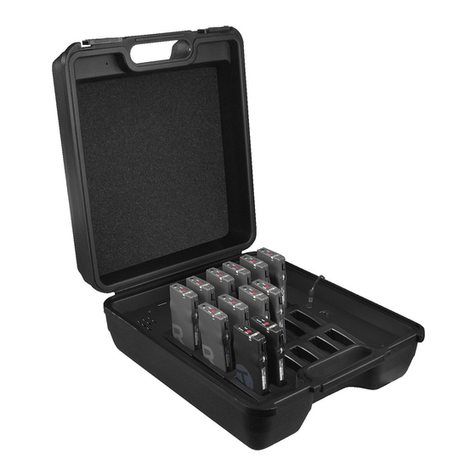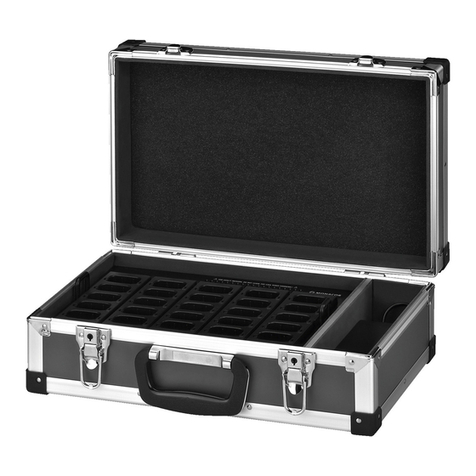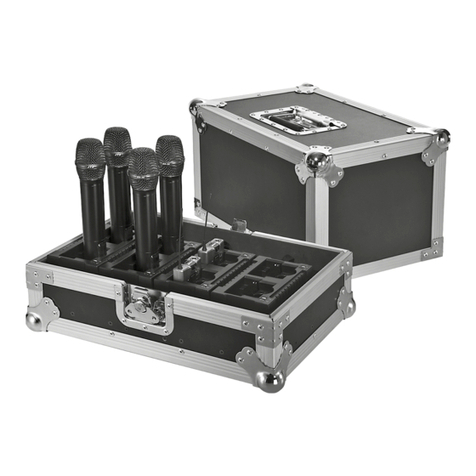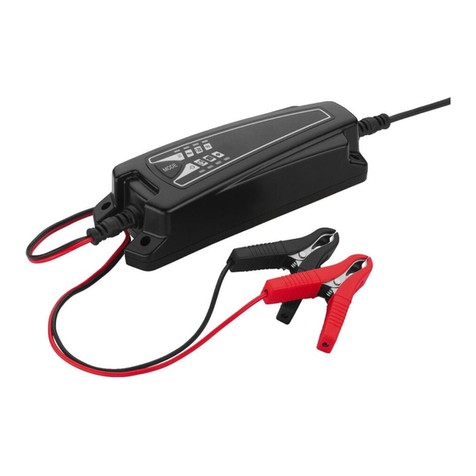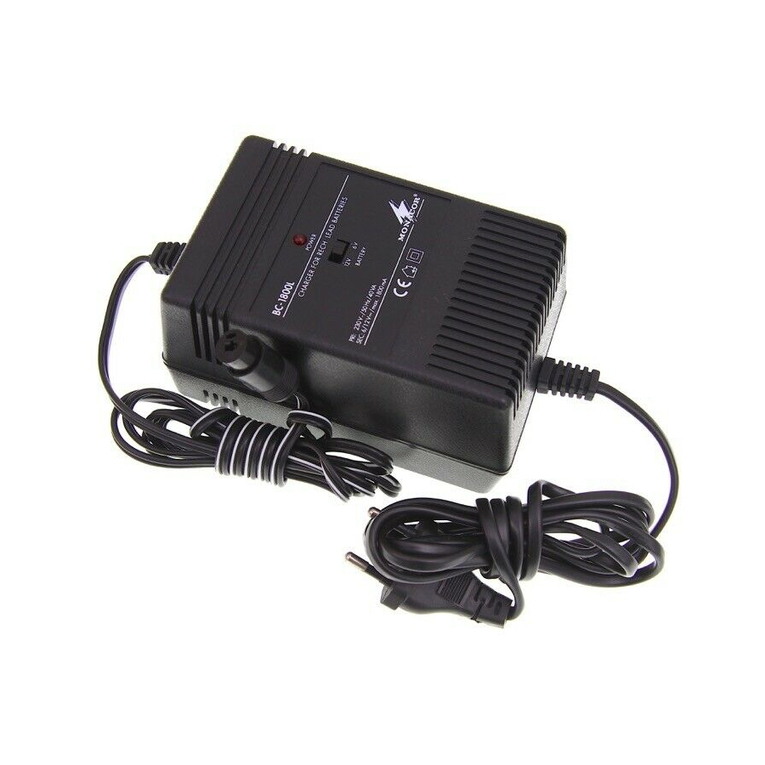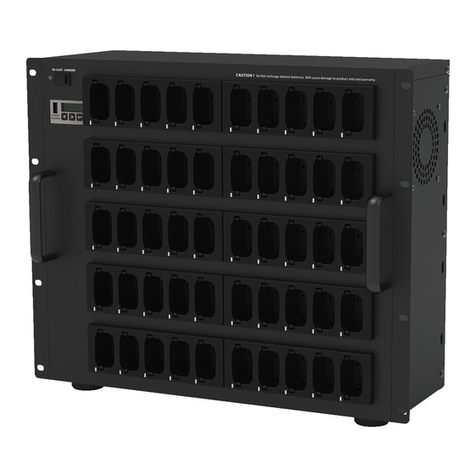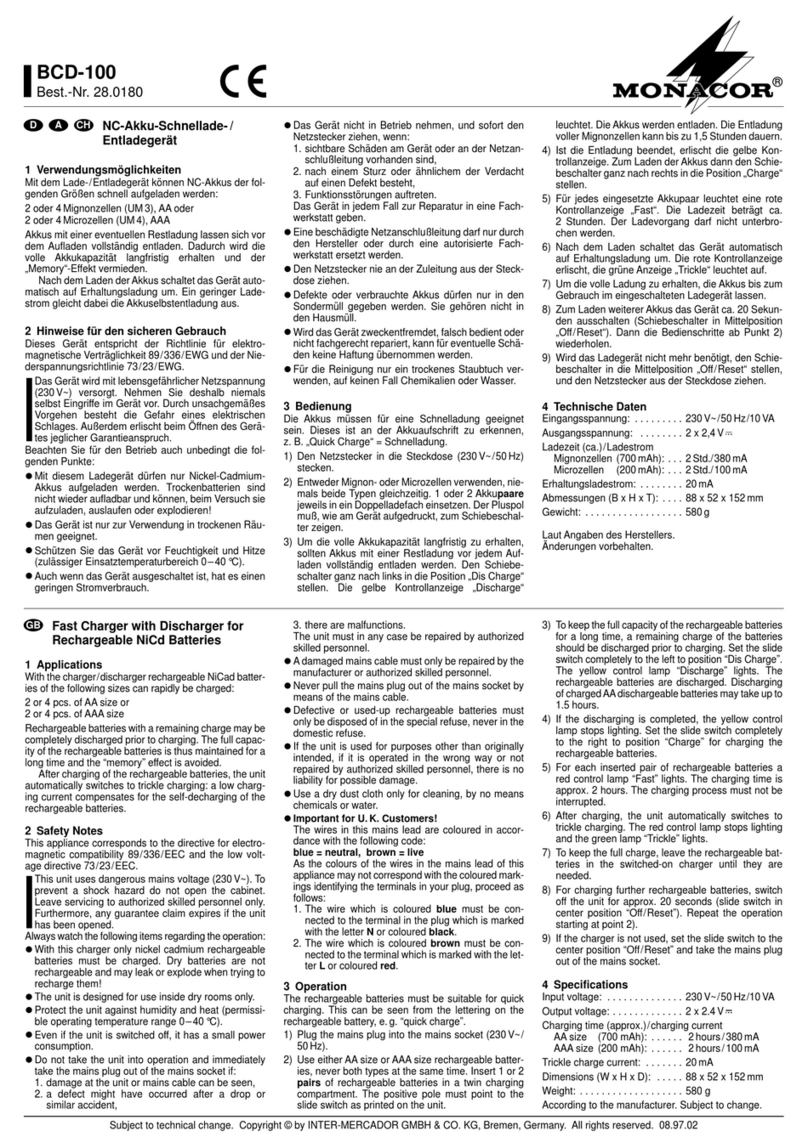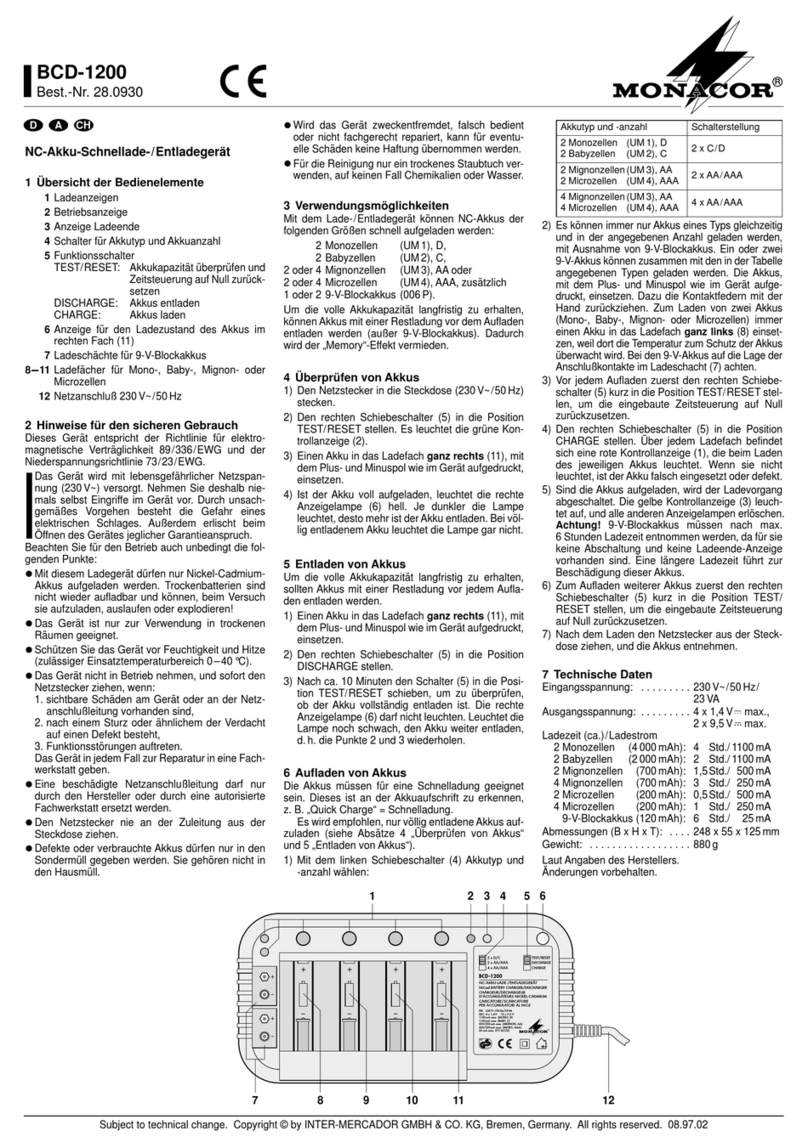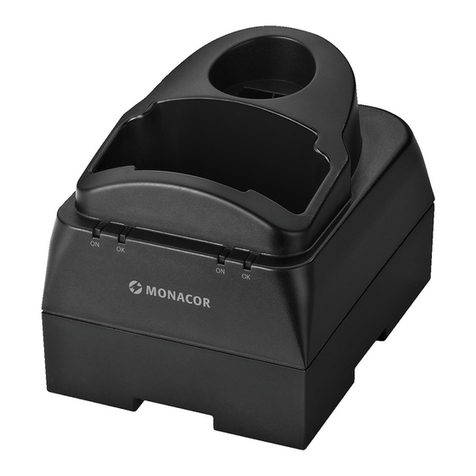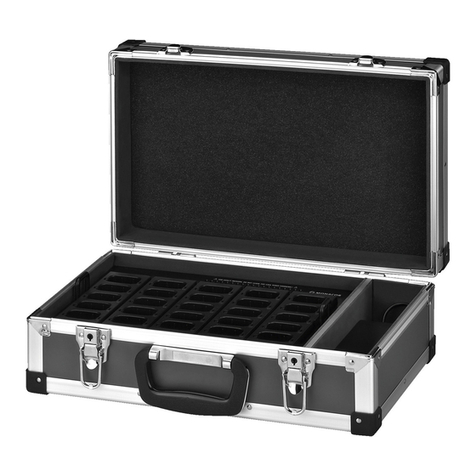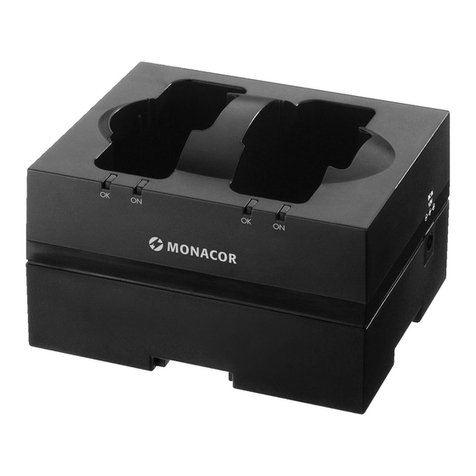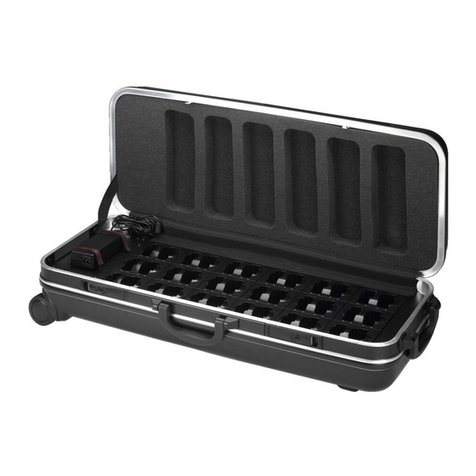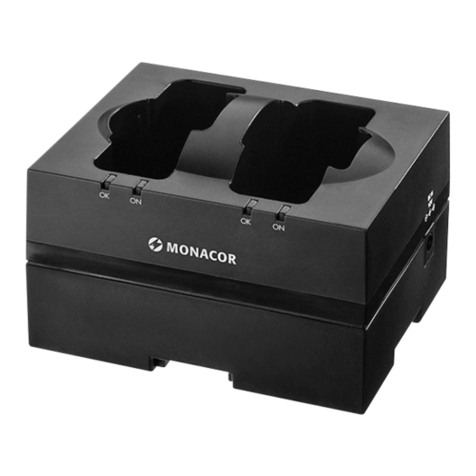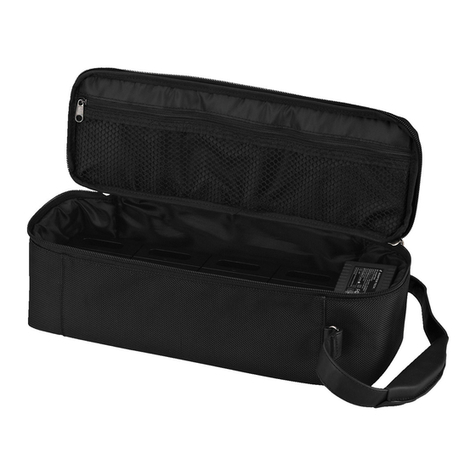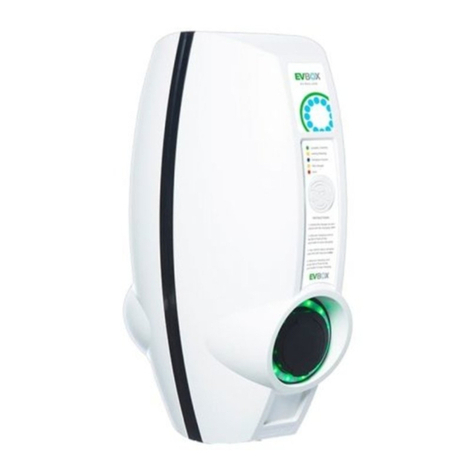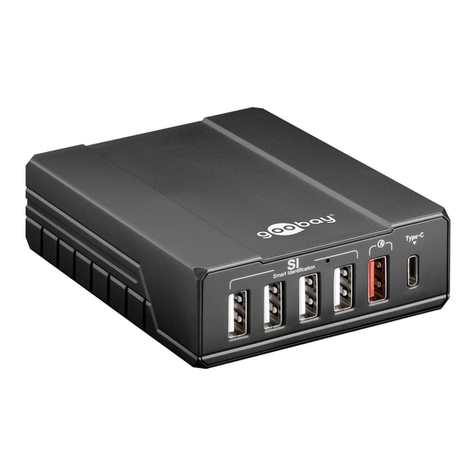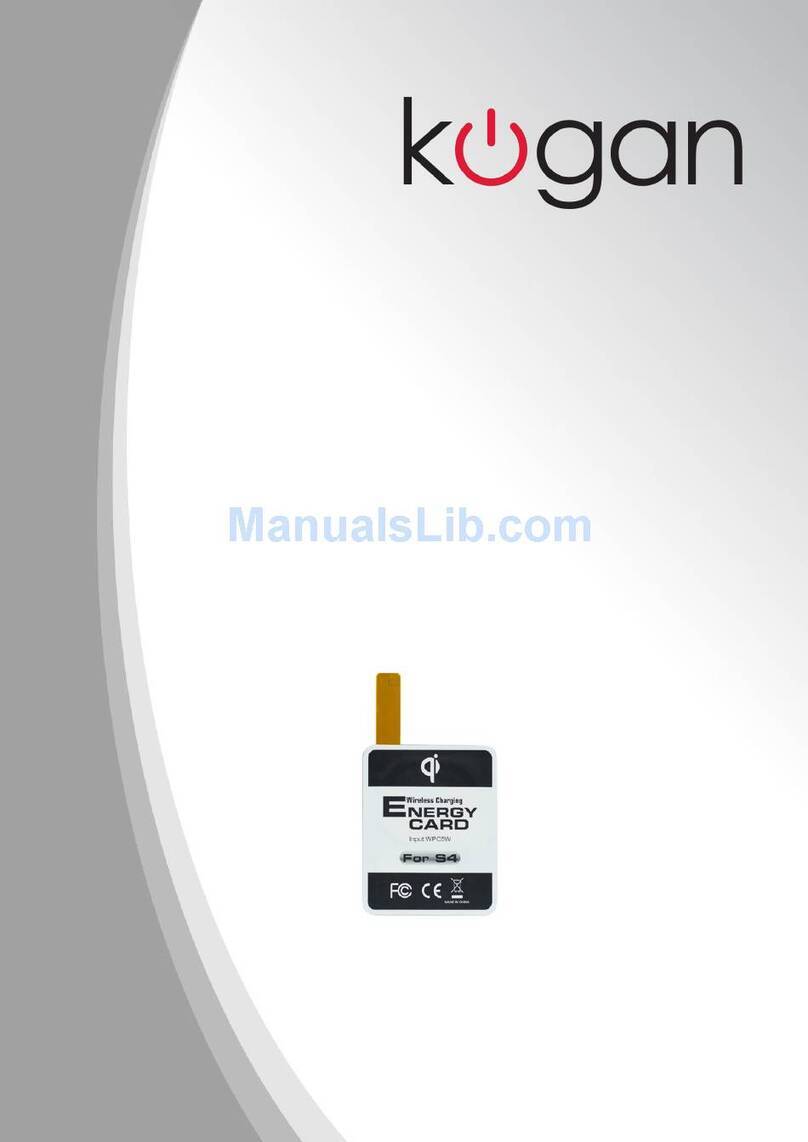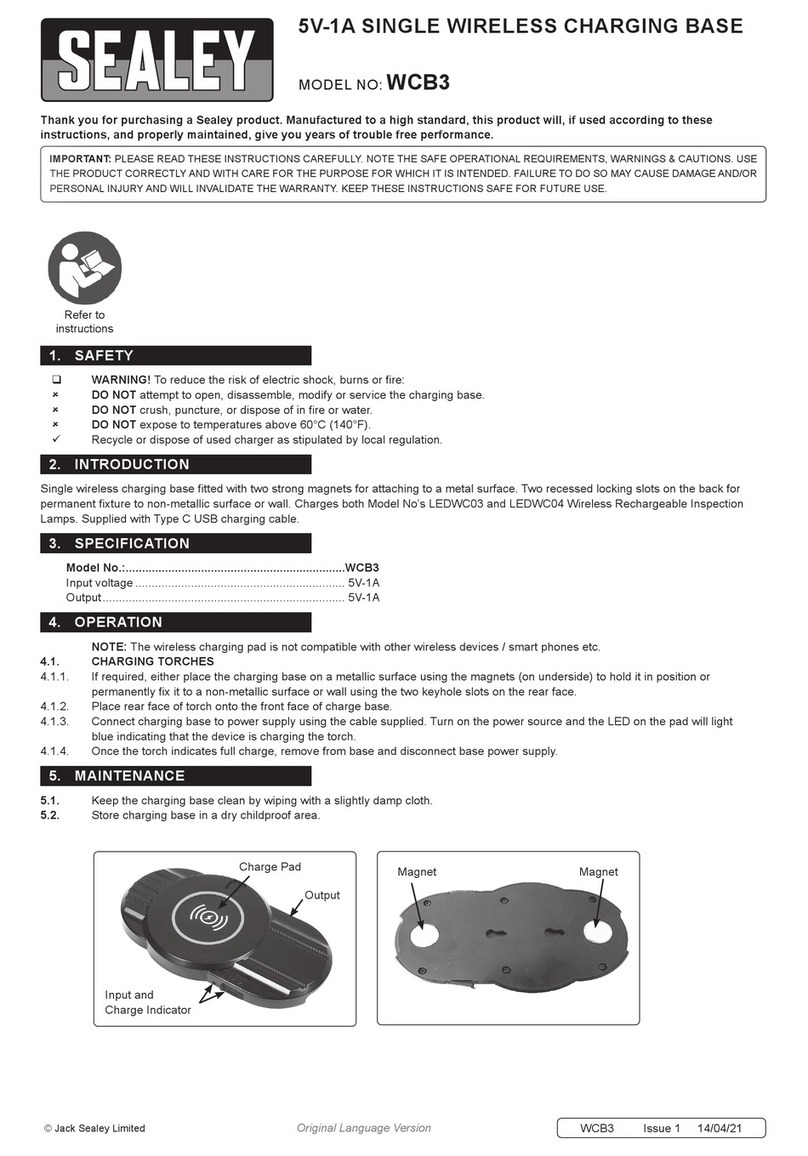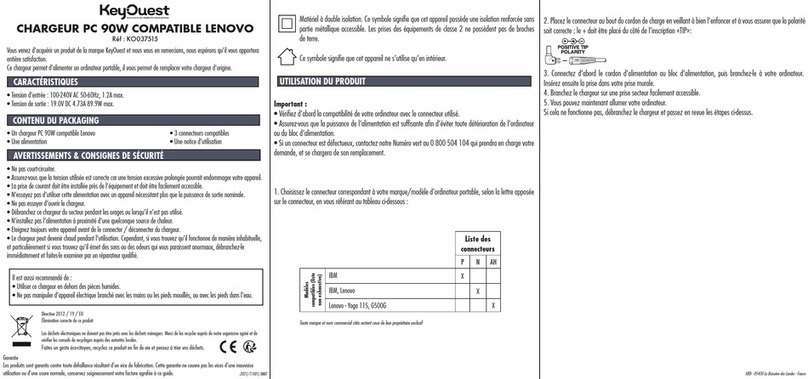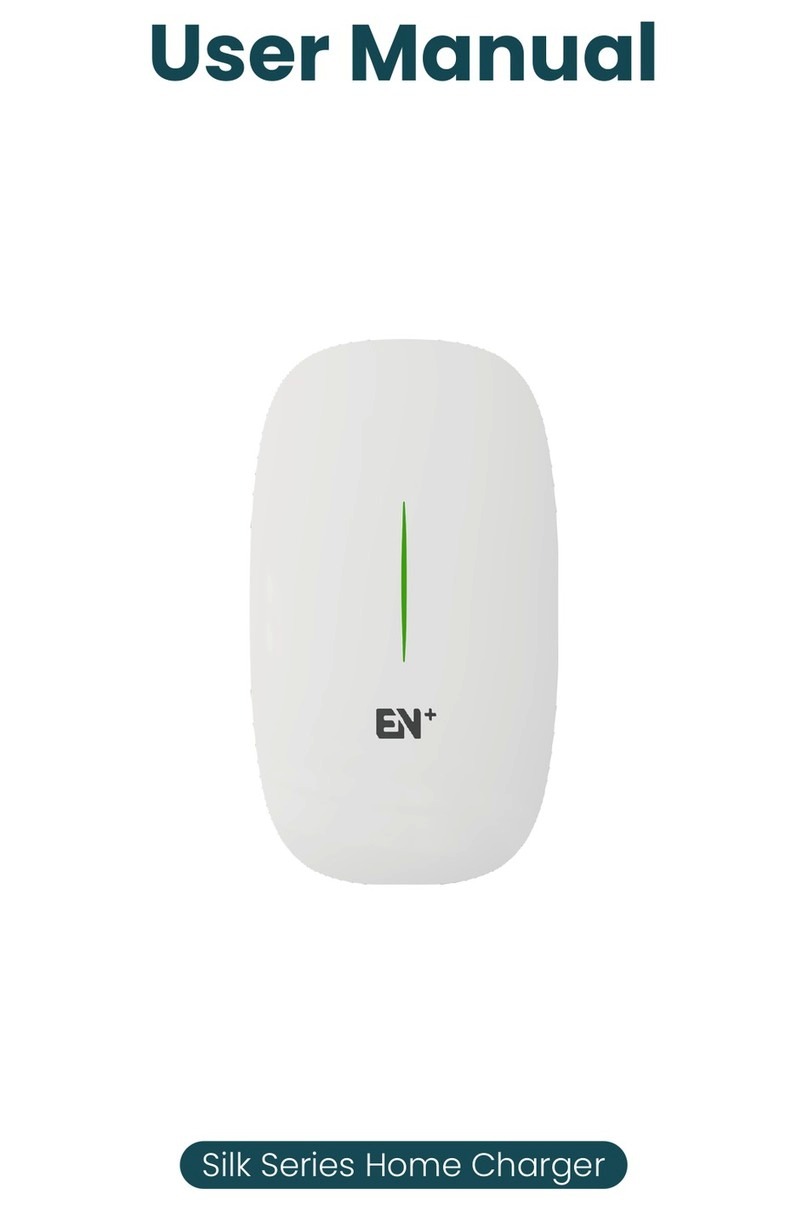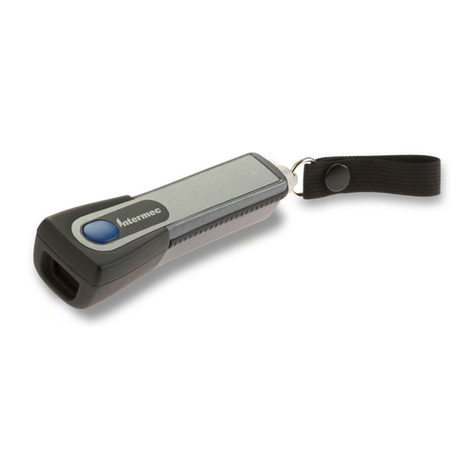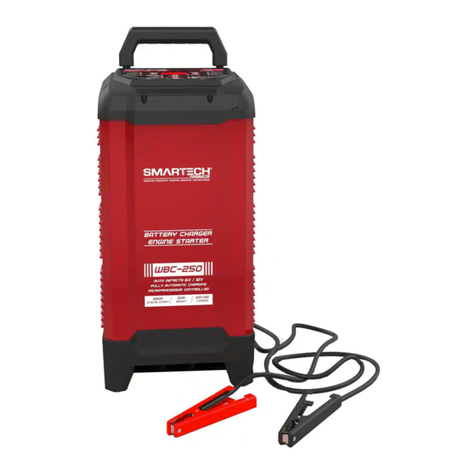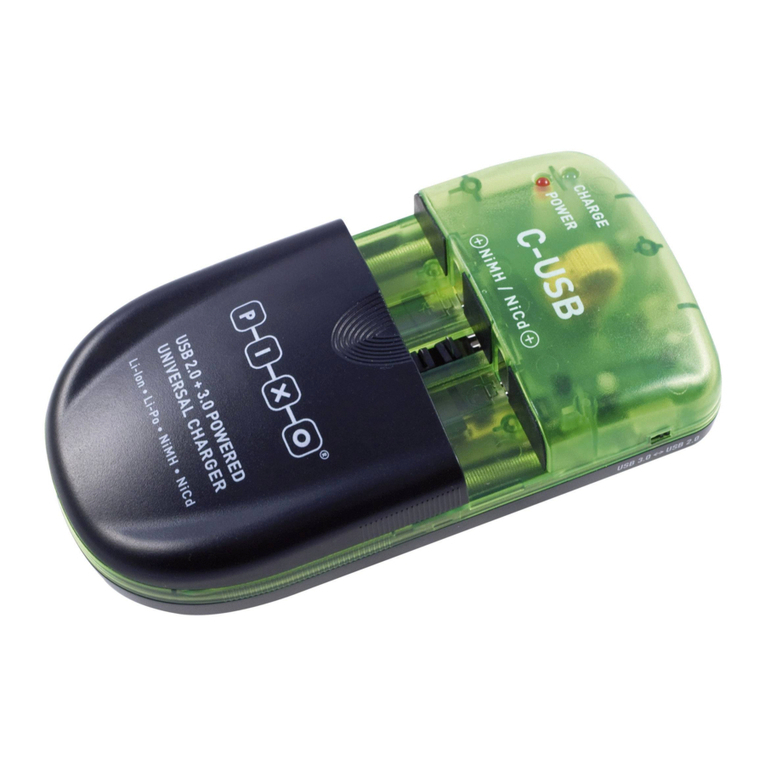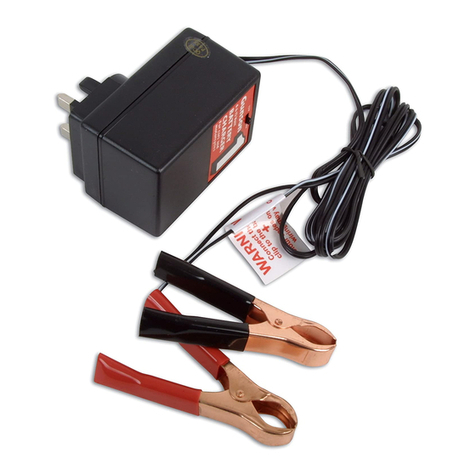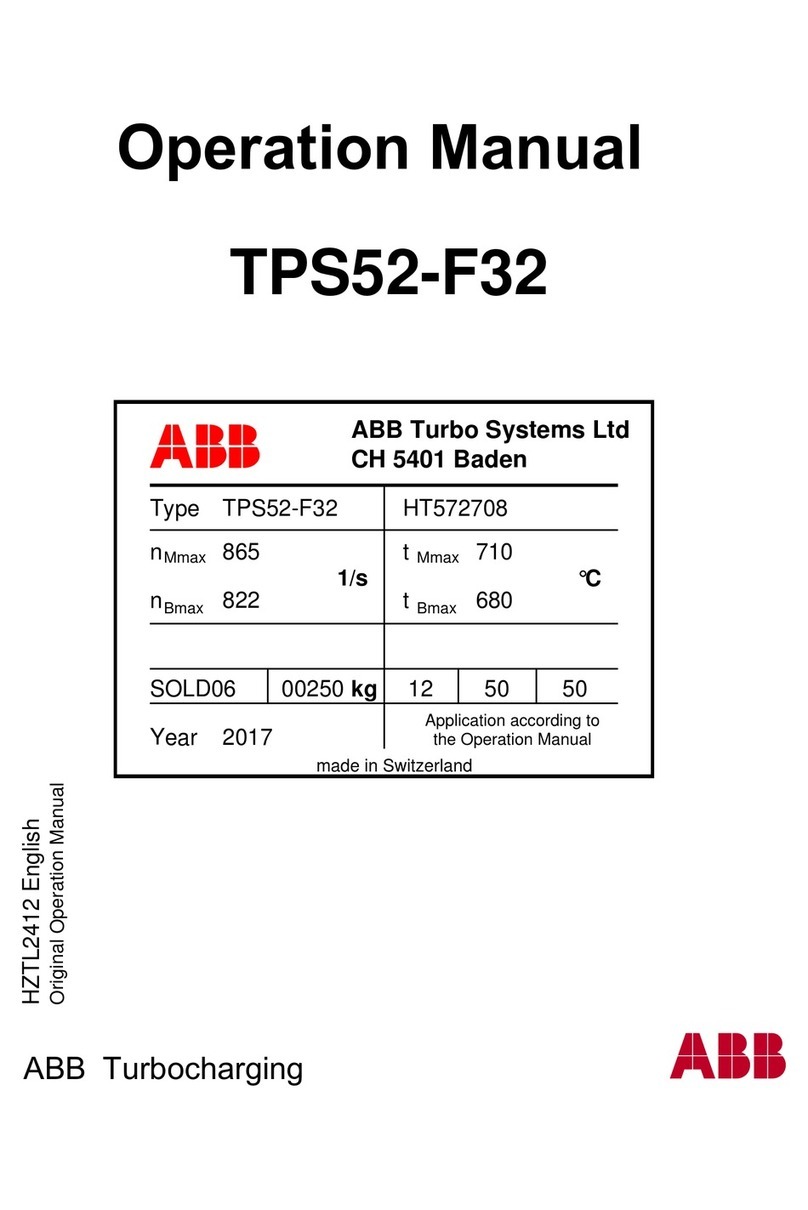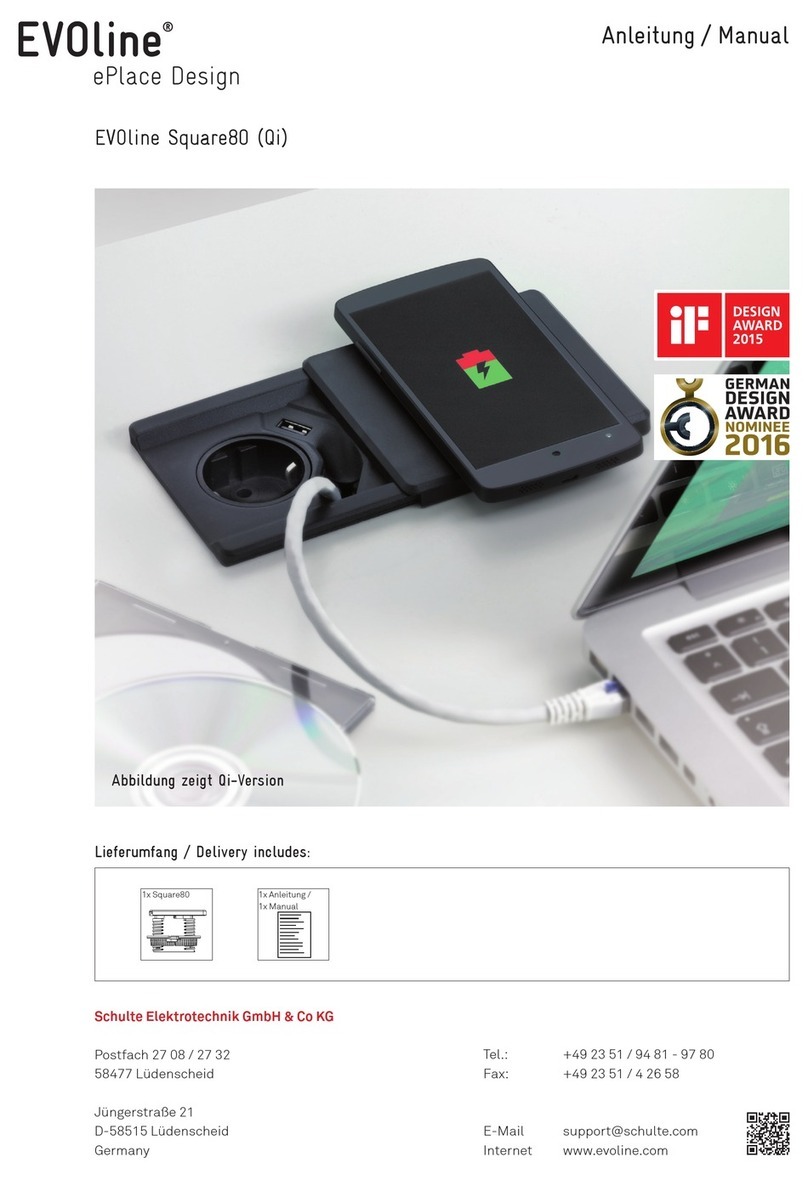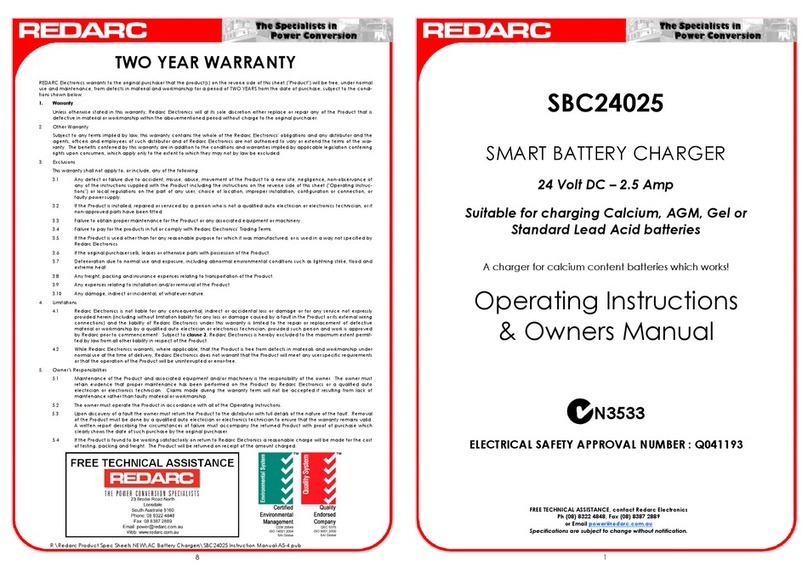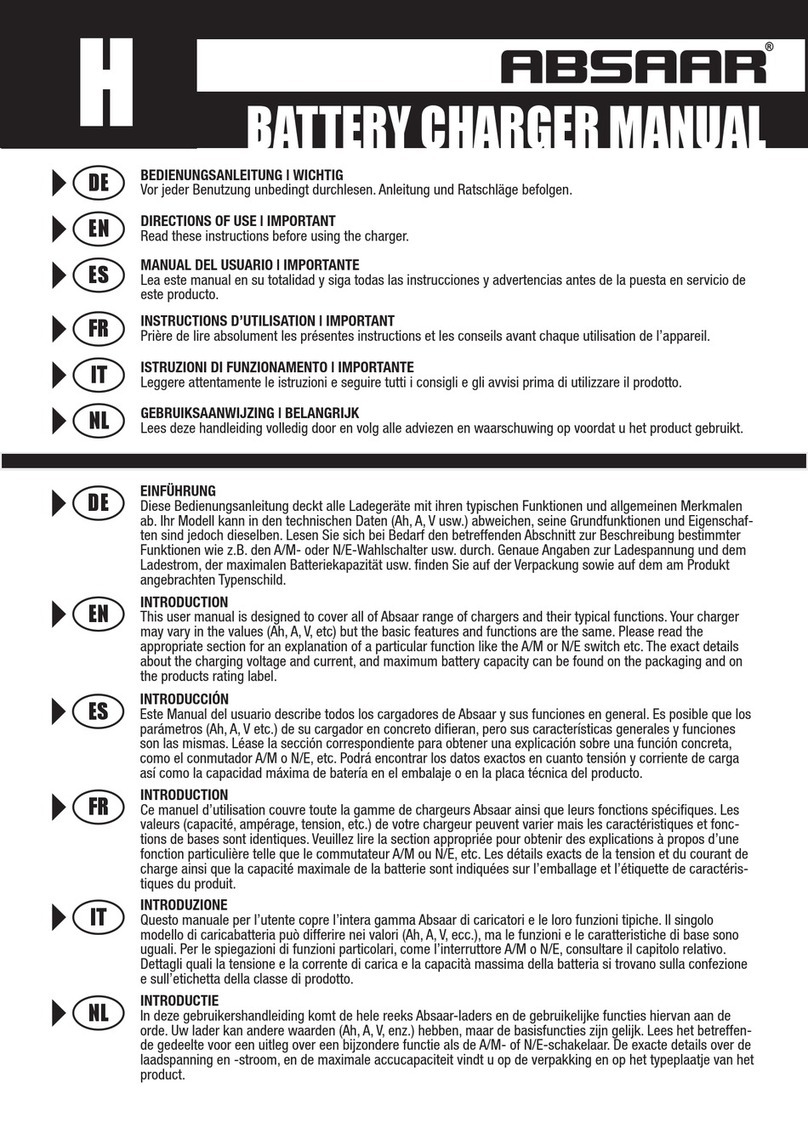ATS-162PS
Bestellnummer 25.4600
Chargeur pour le
récepteur ATS-162R et
lʼémetteur ATS-162T
Veuillez lire la présente notice avec attention
avant le fonctionnement et conservez-la pour
pouvoir vous y reporter ultérieurement.
1 Possibilités dʼutilisation
Le chargeur permet de charger les accumu-
lateurs Lithium-Polymère des émetteurs et
récepteurs du système sans fil ATS-162. Il
est possible de charger simultanément les
accumulateurs de deux appareils.
Pour charger les accus, placez les émet-
teurs/récepteurs dans les compartiments de
charge. Ils sont configurés de telle sorte quʼun
mauvais positionnement des appareils et donc
une inversion accidentelle de polarité ne sont
pas possibles. Des circuits de protection protè-
gent les accumulateurs (p. ex. de surcharge).
2 Conseils de sécurité
Les appareils (chargeur et bloc secteur)
répondent à toutes les directives nécessaires
de lʼUnion européenne et portent donc le
symbole .
GLes appareils ne sont conçus que pour une
utilisation en intérieur. Protégez-les de tout
AVERTISSEMENT Le bloc secteur est ali-
menté par une tension
dangereuse. Ne touchez
jamais lʼintérieur de lʼappa-
reil car vous pourriez subir
une décharge électrique.
type de projections dʼeau, des éclabous-
sures, dʼune humidité élevée et la chaleur
(plage de température de fonctionnement
autorisée : 0 – 40 °C).
GEn aucun cas, vous ne devez poser dʼobjet
contenant du liquide, par exemple un verre,
sur lʼappareil.
GNe faites jamais fonctionner le chargeur et
débranchez immédiatement le bloc secteur
lorsque :
1. des dommages visibles apparaissent
sur les appareils.
2. après une chute ou accident similaire...,
lʼappareil peut présenter un défaut.
3. des dysfonctionnements apparaissent.
Dans tous les cas, les appareils doivent
être réparés par un technicien spécialisé.
GPour le nettoyage, utilisez un chiffon sec et
doux, en aucun cas de produits chimiques
ou dʼeau.
GNous déclinons toute responsabilité en cas
de dommages corporels ou matériels ré-
sultants si les appareils sont utilisés dans
un but autre que celui pour lequel ils ont été
conçus, sʼils ne sont pas correctement uti-
lisés ou sʼils ne sont pas réparés par une
personne habilitée ; de même, la garantie
deviendrait caduque.
Lorsque les appareils sont définitive-
ment retirés du service, vous devez
les déposer dans une usine de recy-
clage de proximité pour contribuer à
leur élimination non polluante.
3 Charge des accumulateurs
1) Reliez le bloc secteur à la prise 5 V du
chargeur et à une prise secteur 230 V~/
50 Hz. Le chargeur est ainsi allumé. Les
deux LEDs de charge commencent à cli-
gnoter brièvement.
2) Tenez lʼémetteur/récepteur par le haut et
insérez-le dans les compartiments de
charge. Les LEDs de charge brillent. En
plus, une LED de contrôle sur lʼémetteur/
récepteur brille. Pendant la charge, les
LEDs correspondantes brillent en rouge.
3) Lorsque lʼaccumulateur dʼun appareil est
complètement chargé, les LEDs corres-
pondantes brillent en vert. Vous pouvez
retirer alors lʼappareil de son comparti-
ment de charge.
4) Pour éteindre le chargeur, débranchez le
bloc secteur de la prise.
4 Caractéristiques techniques
Durée de charge : . . 5 heures environ
(selon lʼétat de charge
de lʼaccu)
Alimentation : . . . . . 5 V /1 A
par bloc secteur relié à
100 – 240 V~,
50 – 60 Hz
Dimensions : . . . . . . 85 × 70 × 106 mm
Poids : . . . . . . . . . . . 175 g
Tout droit de modification réservé.
®
MONACOR INTERNATIONAL GmbH & Co. KG
•
Zum Falsch 36
•
28307 Bremen
•
Germany
Copyright
©
by MONACOR INTERNATIONAL. All rights reserved. A-1362.99.01.09.2012
Caricatore per
il ricevitore ATS-162R e
il trasmettitore ATS-162T
Vi preghiamo di leggere attentamente le pre-
senti istruzioni prima della messa in funzione
e di conservarle per un uso futuro.
1 Possibilità dʼimpiego
Il caricatore serve per ricaricare le batterie ai
polimeri di litio nei trasmettitore e ricevitori
del sistema wireless ATS-162. Si possono
ricaricare contemporaneamente le batterie di
due apparecchi.
Per ricaricare le batterie, i ricevitori/tra-
smettitori si inseriscono nei vani di ricarica.
I vani sono strutturati in modo tale che è
escluso lʼinserimento accidentalmente sba-
gliato degli apparecchi e quindi una polarità
errata. I circuiti di protezione proteggono
le batterie dal danneggiamento (p. es. per
sovraccarica).
2 Avvertenze di sicurezza
Gli apparecchi (caricatore e alimentatore)
sono conformi a tutte le direttive rilevanti del-
lʼUE e pertanto porta la sigla .
AVVERTIMENTO Lʼalimentatore è alimentato
con pericolosa tensione di
rete. Non intervenire mai
personalmente al suo in-
terno. Esiste il pericolo di
una scarica elettrica.
GGli apparecchi sono previsti solo per lʼuso
allʼinterno di locali. Proteggerli dallʼacqua
gocciolante e dagli spruzzi dʼacqua, da alta
umidità dellʼaria e dal calore (temperatura
dʼimpiego ammessa 0 – 40 °C).
GNon depositare sullʼapparecchio dei conte-
nitori riempiti di liquidi, p. es. bicchieri.
GNon mettere in funzione il caricatore o stac-
care subito la spina rete delʼalimentatore
se:
1. gli apparecchi presentano dei danni visi-
bili;
2. dopo una caduta o dopo eventi simili
sussiste il sospetto di un difetto;
3. lʼapparecchio non funziona corretta-
mente.
Per la riparazione rivolgersi sempre ad
unʼofficina competente.
GPer la pulizia usare solo un panno morbido,
asciutto; non impiegare in nessun caso
acqua o prodotti chimici.
GNel caso dʼuso improprio, dʼimpiego scor-
retto o di riparazione non a regola dʼarte
degli apparecchi, non si assume nessuna
responsabilità per eventuali danni conse-
quenziali a persone o a cose e non si
assume nessuna garanzia per gli appa-
recchi.
Se si desidera eliminare gli apparec-
chi definitivamente, consegnarli per
lo smaltimento ad unʼistituzione
locale per il riciclaggio.
3 Ricaricare le batterie
1) Collegare lʼalimentatore con la presa 5 V
del caricatore e inserirlo in una presa di
rete (230 V~/50 Hz). Così, il caricatore è
acceso. Le due spie di ricarica lampeg-
giano brevemente.
2) Inserire in senso verticale i trasmettitori/
ricevitori nei vani di ricarica. Si accendono
le spie di ricarica. In più si accende un
LED di controllo sul trasmettitore/ricevi-
tore. Durante la ricarica, le relative spie
sono rosse.
3) Se la batteria di un apparecchio è comple-
tamente carica, le relative spie diventano
verdi. Allora lʼapparecchio può essere tolto
dal vano di ricarica.
4) Per spegnere il caricatore staccare lʼali-
mentatore dalla presa di rete.
4 Dati tecnici
Durata della ricarica: ca. 5 ore (a seconda
dello stato di carica
della batteria)
Alimentazione: . . . . 5 V /1 A tramite
lʼalimentatore in
dotazione con
100 – 240 V~,
50 – 60 Hz
Dimensioni: . . . . . . . 85 × 70 × 106 mm
Peso: . . . . . . . . . . . 175 g
Con riserva di modifiche tecniche.
wwwwww..iimmggssttaaggeelliinnee..ccoomm
F B CH
I
